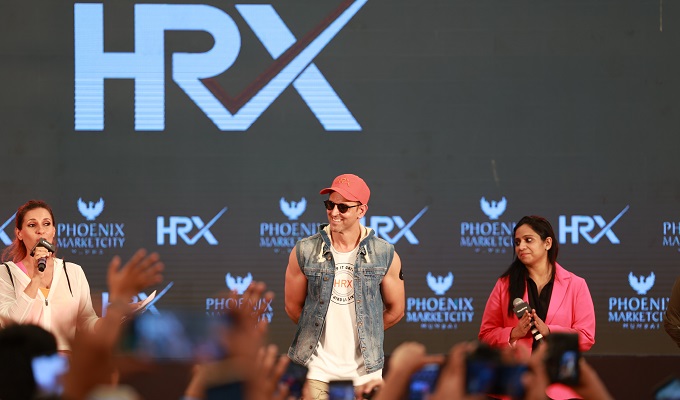Imagine a world where your workout gear seamlessly transitions into your brunch outfit, and where a quick jog in the park doesn’t necessitate a wardrobe change. A world where cutting-edge design and technical fabrics meet effortless style. This remarkable rise of athleisure has taken the world by storm, transforming the way we dress and redefining the concept of activewear.
Athleisure, initially perceived as a simple combination of athletic and leisure wear, has evolved beyond its origins to become much more than just that. It’s no longer just about comfort; it’s a full-fledged fashion revolution. It combines the functionality of athletic wear with the ease and comfort of leisurewear, creating a new category that effortlessly bridges the gap between high-performance fabrics and everyday style. This dynamic industry has significantly influenced the global apparel market by harmonizing comfort with style, offering versatile pieces that go beyond the confines of the gym. Projections suggest this growth will continue to skyrocket in the coming years, solidifying athleisure’s position as a dominant force in the fashion world.
MARKET OVERVIEW
The 1990s Bollywood films like “Kuch Kuch Hota Hai” played a pivotal role in introducing Indian audiences to international sportswear brands like DKNY and Polo Sport. This integration of fashion into popular culture helped spark a growing interest in athletic apparel.
 Several factors are driving India’s athleisure market towards greater heights. The work-from-home trend, coupled with the pandemic-induced focus on fitness, has given athleisure wear a significant boost. A surge in fitness enthusiasts has created a high demand for comfortable and functional clothing that can keep up with their active lifestyles. In addition, The Indian fashion scene is undergoing a dramatic shift, prioritising comfort above all else. Athleisure offers the best of both worlds – breathable, lightweight fabrics and flattering fits, allowing easy movement.
Several factors are driving India’s athleisure market towards greater heights. The work-from-home trend, coupled with the pandemic-induced focus on fitness, has given athleisure wear a significant boost. A surge in fitness enthusiasts has created a high demand for comfortable and functional clothing that can keep up with their active lifestyles. In addition, The Indian fashion scene is undergoing a dramatic shift, prioritising comfort above all else. Athleisure offers the best of both worlds – breathable, lightweight fabrics and flattering fits, allowing easy movement.
The athleisure revolution isn’t confined to major cities. The demand for athleisure is surging across tier-II and beyond cities, fuelled by increasing disposable income and a growing interest in fitness, particularly post pandemic. This rise in popularity is further amplified by the e-commerce boom, making athleisure wear accessible to a wider audience across the country.
India’s strong textile industry offers a cost advantage in manufacturing athleisure wear, making it an attractive proposition for both domestic and international brands. This cost advantage, coupled with India’s large and relatively untapped market, presents a perfect match for the athleisure industry. The market itself is a thriving ecosystem. International brands have established a strong presence for decades, but homegrown heroes like HRX, Wrogn, and Good Indian are making their mark. This healthy competition benefits consumers with a wider range of stylish and comfortable options.
With an estimated market size of US$ 1.1 Billion in 2023 and a projected CAGR of 14% up to 2028, the athleisure industry in India is poised for exponential growth. This remarkable growth is fuelled by evolving fashion trends, increasing health consciousness, the growing preference for comfortable yet stylish clothing, and a strong ecosystem of domestic and international brands. India’s cost competitiveness, youthful population, and rising disposable income paint a bright future for the athleisure market, solidifying its position as a major player in the global fashion market.
MARKET TRENDS
The athleisure world is a dynamic industry, constantly evolving with the latest trends:
- Imagine leggings that track your workout or a sportswear that monitors your heart rate. Wearable technology is being seamlessly integrated into athleisure, offering a whole new level of functionality and performance.
- Eco-conscious consumers are demanding more from their clothing. Athleisure brands are responding with a focus on sustainable materials like recycled fabrics and organic cotton. This shift towards environmentally friendly practices reflects a growing awareness of our impact on the planet.
- Gone are the days of one-size-fits-all. Athleisure brands are embracing size inclusivity, offering a wider range of sizes and styles to cater to diverse body types. This move towards inclusivity celebrates individuality and empowers everyone to participate in the athleisure movement.
- Social media is a powerful force driving the athleisure trend in India. Fitness influencers and fashion bloggers are showcasing how to rock athleisure pieces both on and off the gym floor.
- International sportswear giants have a strong presence in India, while homegrown brands are trying to make their mark. New brands entering the market today – like HRX, Wrogn, Good Indian, Tyka, Shiv Naresh, SS, Performax, Cosco, Nivia – are trying to follow the standards that the brands have set and build strategies for marketing and sales that are second to none.
- Women are at the forefront of this activewear revolution. Studies show that a higher percentage of women participate in daily fitness activities compared to men. This focus on health and well-being, coupled with a desire for stylish comfort, is driving the demand for athleisure wear among women.
ROLE OF CELEBRITIES & INFLUENCERS
From Bollywood stars to global fashion icons, celebrities have become the ultimate athleisure ambassadors, rocking sporty styles and endorsing major brands. These collaborations bridge the gap between high fashion and everyday wear, making athleisure even more desirable.
For example, Bollywood actress and youth fitness icon Rakul Preet Singh isn’t just promoting athleisure; she’s using her influence to spread a powerful message. Her campaign for Enamor’s athletic line, “Everybody Is Fab,” encourages women to embrace their bodies in all their shapes and sizes. The campaign used is a perfect example of how celebrities can leverage their influence to promote inclusivity and confidence in the athleisure world.
 It’s not just endorsements; celebrities are taking an even bigger leap into athleisure. We’ve seen a surge in celebrity-owned activewear brands in recent years. Think Tiger Shroff’s trendy label ‘Prowl’, or Hrithik Roshan’s ‘HRX’, offering activewear designed with performance and style in mind. Jacqueline Fernandez’s brand ‘Just F’ adds another dimension, catering to women who crave both fashion and functionality in their workout wear. These stars aren’t just wearing athleisure; they’re actively shaping its future by understanding the needs and desires of their fans.
It’s not just endorsements; celebrities are taking an even bigger leap into athleisure. We’ve seen a surge in celebrity-owned activewear brands in recent years. Think Tiger Shroff’s trendy label ‘Prowl’, or Hrithik Roshan’s ‘HRX’, offering activewear designed with performance and style in mind. Jacqueline Fernandez’s brand ‘Just F’ adds another dimension, catering to women who crave both fashion and functionality in their workout wear. These stars aren’t just wearing athleisure; they’re actively shaping its future by understanding the needs and desires of their fans.
Celebrities aren’t the only ones influencing the athleisure movement. Social media has become a breeding ground for fitness enthusiasts and fashion bloggers who showcase stylish athleisure looks, workout routines, and healthy living tips. These everyday influencers inspire millions to embrace an active lifestyle and elevate their athleisure game. From budget-friendly outfit ideas to discovering new brands, social media is a one-stop-shop for all things athleisure.
THE RISE OF DIRECT-TO-CONSUMER (D2C) BRANDS
In recent years, the athleisure market has witnessed a significant transformation driven by the emergence of Direct-to-Consumer (D2C) brands. These brands have revolutionised the way athletic apparel and leisurewear are marketed, sold, and consumed, paving way in a new era of accessibility, innovation, and consumer centricity.
One of the key factors contributing to the rapid growth of D2C brands in the athleisure sector is their ability to bypass traditional distribution channels. By selling directly to consumers online, these brands eliminate the need for intermediaries such as wholesalers and retailers. This direct approach not only streamlines the supply chain but also enables D2C brands to establish a closer connection with their customers.
Central to the success of D2C athleisure brands is their emphasis on storytelling and brand identity. Unlike traditional brands that rely on retailers to showcase their products, D2C brands have the freedom to convey their unique brand story directly to consumers. Through compelling narratives, engaging content, and immersive online experiences, these brands create meaningful connections with their audience, fostering loyalty and advocacy.
 Social media plays a pivotal role in the D2C athleisure landscape, serving as a powerful tool for engagement, communication, and community-building. D2C brands leverage platforms like Instagram, TikTok, and YouTube to showcase their products, interact with customers and showcase their brand values. This direct line of communication not only enhances the user experience but also provides valuable insights and feedback that help construct product development and marketing strategies.
Social media plays a pivotal role in the D2C athleisure landscape, serving as a powerful tool for engagement, communication, and community-building. D2C brands leverage platforms like Instagram, TikTok, and YouTube to showcase their products, interact with customers and showcase their brand values. This direct line of communication not only enhances the user experience but also provides valuable insights and feedback that help construct product development and marketing strategies.
In terms of impact, D2C athleisure brands have disrupted the traditional retail landscape, challenging established players and reshaping industry norms. Their agile, customer-centric approach has forced incumbents to rethink their strategies, adapt to changing consumer preferences, and enhance their digital capabilities.
CONCLUSION
The athleisure industry in India is experiencing rapid expansion and holds immense potential for future growth. The increasing participation of women and children in sports activities, along with major brands promoting activewear as casual attire, are positive indicators for market expansion. The emergence of youthful direct-to-consumer (D2C) labels and the popularity of e-commerce platforms in tier II and tier III cities further contribute to the sector’s growth.
However, challenges such as maintaining price competitiveness in the face of inflation and fierce competition in the market are evident. Despite these challenges, the athleisure sector presents opportunities for innovation, sustainability, and technological advancements. By staying responsive to changing consumer demands and trends, athleisure brands can navigate the dynamic market landscape and continue to thrive in the years to come. Athleisure isn’t just about clothes; it’s a lifestyle choice. It’s about feeling comfortable, staying healthy, and effortlessly looking good. As the industry keeps evolving, athleisure continues to be a big part of our fashion world, motivating us to feel confident and live an active, stylish life. So, when you put on those leggings and a sporty top, remember, it’s not just about getting dressed; it’s about being part of a cultural shift that’s reshaping our fashion choices and daily movements.




